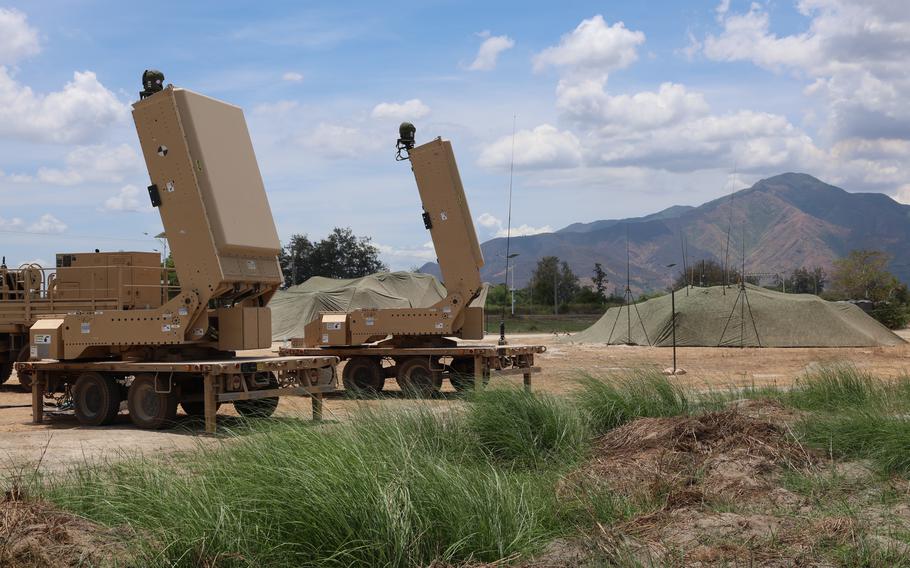
U.S. soldiers test microwave counter-drone devices April 30, 2025, during an exercise at Naval Station Leovigildo Gantioqui, Philippines. The system's creator, Epirus, signed a $43.5 million deal with the Army to develop a second-generation version expected to more than double the range, according to a statement July 17, 2025. (Brandon Rickert/U.S. Army)
A recently awarded Army contract aims to provide more weapons that use high-powered microwaves to help soldiers take down drone swarms in one swoop.
Los Angeles-based technology company Epirus will develop a microwave platform that is expected to more than double the range and power of a similar system currently being experimented with, the company said in a statement last week.
Microwave technology that the company pioneered can deliver a pulse to zap a drone’s electronics in midair. The new $43.5 million deal with the Army is directed toward work on a second generation of the company’s microwave platform.
“Drones are everywhere,” Epirus CEO Andy Lowery said in the July 17 statement. “We’ve seen drone incursions over U.S. bases, incursions over our southern border. And swarm attacks are defining overseas conflicts.”
The first microwave platform produced by the company has been “put through the wringer” and emerged from testing with favorable outcomes, Lowery added.
In May, the Army conducted a live-fire test of the Epirus system during an exercise in the Philippines.
“We were able to demonstrate that we can successfully defeat drone swarms in a tropical environment,” Capt. Bray McCollum said in an Army statement at the time.
The Navy and Marine Corps also are carrying out similar tests.

U.S. soldiers test microwave anti-drone weaponry at Naval Station Leovigildo Gantioqui, Philippines, on April 30, 2025. The Army is partnering with technology company Epirus under a $43.5 million contract for a microwave drone-countering system with greater range, according to a statement July 17, 2025. (Brandon Rickert/U.S. Army)
There has been growing buzz in the military about the potential for microwave technology to deal with the drone threat. While such aircraft are easily and cheaply mass-produced, taking them down can be expensive.
U.S. service members have an array of tools to deal with drones, including electronic jamming technology and expensive precision munitions fired directly at targets.
The advantage of Epirus’ approach, the company says, is that it costs pennies per drone kill. Also, a soldier can use the system to take down an entire swarm at once rather than target drones individually.
It’s unclear when the technology could be fully integrated into the military’s counter-drone arsenal. However, despite its promise, it’s still unlikely to be a cure-all, according to analysts.
During the Russia-Ukraine war, drone use has been constantly evolving as both sides learn and adopt countermeasures. For example, as jamming capabilities developed, tethered drones invulnerable to electronic attack were deployed as a workaround.
Microwave pulses could also be effective against tethered drones, since the pulse waves target the onboard electronics regardless of how the drone is controlled.
But just as free-flying drones also have become increasingly hardened against electronic jamming, adversaries would be expected to develop countermeasures to deal with the microwave threat, such as hardening internal electronics.
High-powered microwaves are “not a silver bullet,” Neil Hart, a military analyst with the Australian Strategic Policy Institute, wrote in May.
“(Microwave anti-drone weaponry) must be integrated into a layered approach that combines kinetic, electronic warfare and directed energy systems to maximize the adaptability of defenses against evolving threats.”